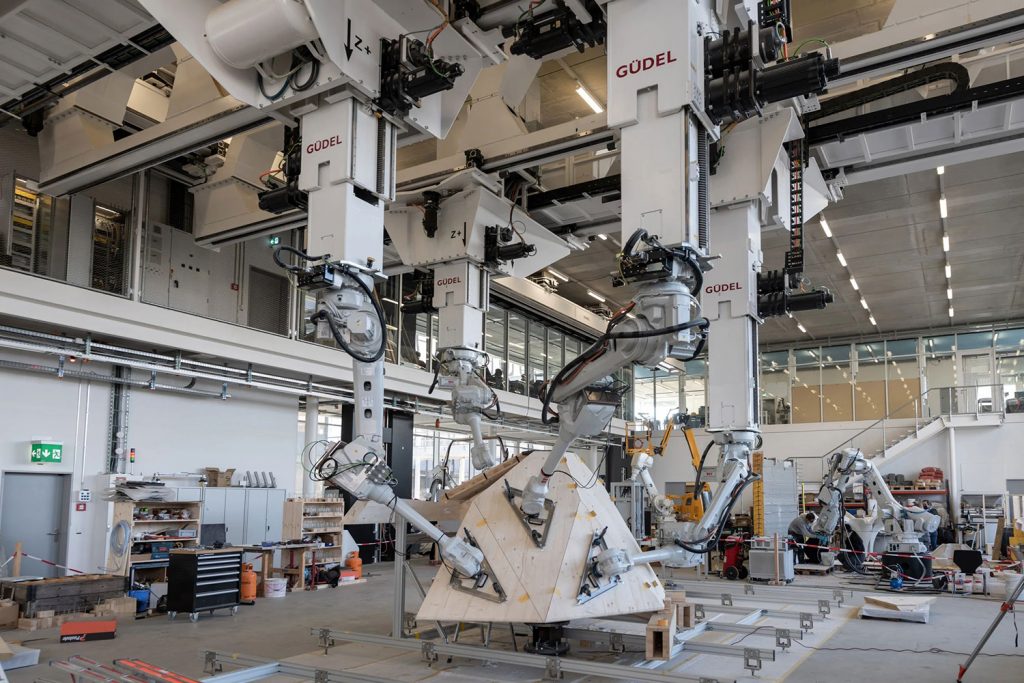In a project that involves collaborating with robots, researchers from ETH Zurich are developing a large architectural structure that will imitate the Babylonian Hanging Gardens.
The project, named Semiramis after the Assyrian queen who is sometimes linked to the ancient garden, was created using artificial intelligence and is being developed with the help of four robots.
Five geometrically intricate wooden pods, each planted with trees and other vegetation, will make up the structure. It will be supported by eight thin steel pillars and will reach a height of 22.5 meters.
Architecture and building have always been on the cutting edge of technological and material innovations, albeit quietly. The concept is a giant sculptural planter with “hanging gardens” inspired by mythical structures in Babylon’s old city.
Of course, its authors, architectural professors Fabio Gramazio and Matthias Kohler, came up with the overall concept. However, the design was created by running a collection of computer models and machine learning algorithms through the essential parameters, such as size, the need for watering, and the construction style.
Semiramis will be installed on the grounds of Tech Cluster Zug, a Swiss innovation center currently under construction. In the spring of 2022, the structure will be built and planted.
The design included software and algorithms developed by experts at a Swiss university and used for the first time on this project. The researchers were presented with a variety of design possibilities that fit their submitted parameters thanks to a machine learning system created in partnership with the Swiss Data Science Center.
Different pod forms and spatial configurations were among the alternatives, and the variations would be highlighted in terms of how they influenced particular goal variables like pod irrigation. The concepts were then adjusted at the university’s Immersive Design Facility, an augmented reality lab on the Hönggerberg campus.
The researchers used software created in collaboration with ETH Zurich’s Computational Robotics Lab to investigate and fine-tune the designs in augmented reality.
The researchers’ final design for Semiramis is currently being built at ETH Zurich’s Robotic Fabrication Laboratory, where four suspended robotic arms operate in unison to assemble its wooden elements.

